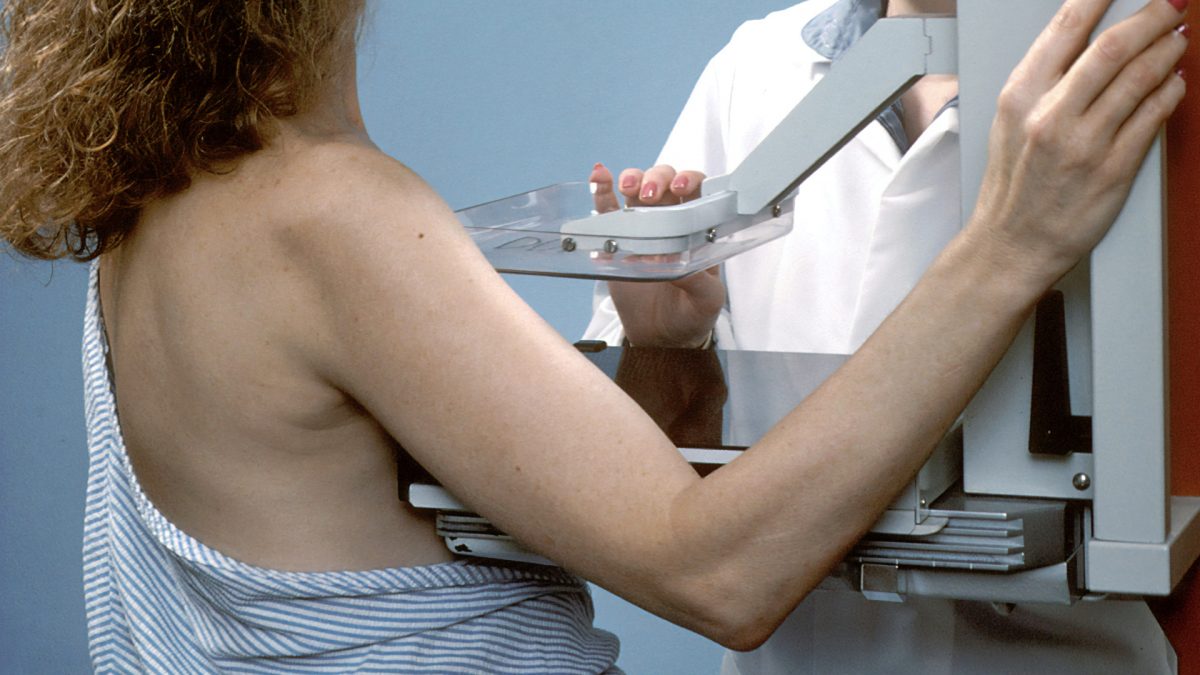Most Women May Experience at Least One False-Positive Mammogram
Odds are most women will get at least one false-positive mammogram, but, thankfully, most women who are called back for further testing of a suspicious […]

Odds are most women will get at least one false-positive mammogram, but, thankfully, most women who are called back for further testing of a suspicious mammogram finding do not end up having cancer after all.
In response to the Swiss Medical Board’s recommendation against women of any age getting routine mammograms, critics suggested that instead of completely phasing out screening programs, we should leave it up to each woman individually to make her own judgement once she’s fully informed about the pros and cons. “On the basis of the same information, some women will choose screening, and others will not.” I completely agree.
When it comes to medical treatments, I think most patients understand there are risks and benefits. Drugs can have side-effects, and surgeries can have complications. So, you make your decision based on whether you think the benefits outweigh the risks—but “patients have been taught to think differently about screening. There are no harms. It’s always good to know. It is just about gathering information. Of course you want it. It is a brain-dead decision. In reality, the truth is more nuanced. There are benefit and harms to consider in screening—just as there are in treatment.”
“In the case of screening mammography, the most frequent harm is a false-positive result,” where they think they see something on the scan, but after further testing, including more x-rays, ultrasound, or a biopsy, it turns out to be nothing. Phew! As I discuss in my video Consequences of False-Positive Mammogram Results, this can cause a “roller coaster of emotions.” Experiencing a false-positive result can be an agonizing experience, one that “might profoundly influence the woman’s life.” Some women can experience depression, anxiety, and lack of sleep over it, even months later. Further, even after getting the all clear, breast cancer worries can persist a year or more later. Beyond psychological effects, if they have to go in for a biopsy, the post-procedural pain can sometimes continue for days or weeks, even with the use of local anesthesia during the procedure.
“These adverse consequences would be less concerning if false-positive mammograms were an uncommon event.” Unfortunately, most women will experience at least one false-positive mammogram within ten years of annual screening. The odds that a single mammogram will produce a false-positive in North America is only about 10 to 14 percent, but that’s much higher than in Europe, for example, where it’s only about 1 in 20 or 1 in 50. Why the discrepancy? It’s thought that American radiologists are so afraid of being sued for malpractice that the bar they use is much lower, and that seems to be fine for a lot of women. When asked, many felt it would be worth it for ten thousand women to have to go through false-positives if it saved one life, and this sentiment was shared by many women who themselves had experienced false-positive results so they had first-hand knowledge. In fact, most women don’t even want to take false-positives into account when deciding about screening—but some women do.
For some women, going through a false-alarm isn’t a big deal, but for others, it can be really scary. Some women who were interviewed going through the process were described as being in a state of “emotional chaos” facing a possible cancer diagnosis. Waiting for the results was particularly hard for some women because it was constantly on their minds. After it was over, many women were able to just brush it off, whereas others experienced “persistent anxiety” even though they were given the all-clear.
Studies have noted increased anxiety, on average, even months after being called back for a suspicious mammogram that turned out to be nothing. In fact, a study of hundreds of women who experienced a false positive found that some appeared to be suffering the consequences even years later. The women were followed for “a period of three years after being declared free of suspected cancer,” and the experience still seemed to haunt them. So, maybe we shouldn’t just dismiss these false alarms. Regardless, women should be informed of the possibility and reassured that most women who are called back for further testing of a suspicious mammogram finding do not end up having cancer after all. This may put their minds at ease a bit, as they go through the process and wait for the final results.
There is just so much confusion, combined with the corrupting commercial interests of a billion-dollar industry, when it comes to this topic. As with any important health decision, everyone should be fully informed of the risks and benefits, and make up their own mind about their own bodies. This is the fifth in my 14-part series on mammograms. For the others, see:
Nine out of Ten Women Misinformed about Mammograms Mammogram Recommendations: Why the Conflicting Guidelines? Flashback Friday: Should Women Get Mammograms Starting at Age 40? Do Mammograms Save Lives? Do Mammograms Hurt? Can Mammogram Radiation Cause Breast Cancer? Understanding the Mammogram Paradox Overtreatment of Stage 0 Breast Cancer DCIS Women Deserve to Know the Truth About Mammograms Breast Cancer and the Five-Year Survival Rate Myth_ Why Mammograms Don’t Appear to Save Lives Why Patients Aren’t Informed About Mammograms The Pros and Cons of MammogramsKEY TAKEAWAYS
Critics of the Swiss Medical Board’s decision not to recommend routine breast mammograms at any age suggested that each woman should choose whether to be screened or not after she’s fully informed of the pros and cons. Although most patients understand prescriptions drugs can have negative side effects and surgeries can have complications, for example, screenings have been presented as being benign, information-gathering tools without potential harms. The most frequent harm of screening mammography is a false-positive result, which often leads to further testing, more x-rays, ultrasound, or biopsy and can cause emotional distress, even months later. Most women will experience at least one false-positive mammogram within ten years of annual screening. Studies have found increased anxiety months and even years after being called back for a suspicious mammogram that was ultimately found to be nothing.For more on breast cancer, see my videos Oxidized Cholesterol 27HC May Explain Three Breast Cancer Mysteries, Eggs and Breast Cancer and Flashback Friday: Can Flax Seeds Help Prevent Breast Cancer?
I was able to cover colon cancer screening in just one video. If you missed it, see Should We All Get Colonoscopies Starting at Age 50?.
Also on the topic of medical screenings, check out Flashback Friday: Worth Getting an Annual Health Check-Up and Physical Exam?, Is It Worth Getting Annual Health Check-Ups? and Is It Worth Getting an Annual Physical Exam?.
In health,
Michael Greger, M.D.
PS: If you haven’t yet, you can subscribe to my free videos here and watch my live presentations:
2019: Evidence-Based Weight Loss 2016: How Not To Die: The Role of Diet in Preventing, Arresting, and Reversing Our Top 15 Killers 2015: Food as Medicine: Preventing and Treating the Most Dreaded Diseases with Diet 2014: From Table to Able: Combating Disabling Diseases with Food 2013: More Than an Apple a Day 2012: Uprooting the Leading Causes of Death
 Kass
Kass 































